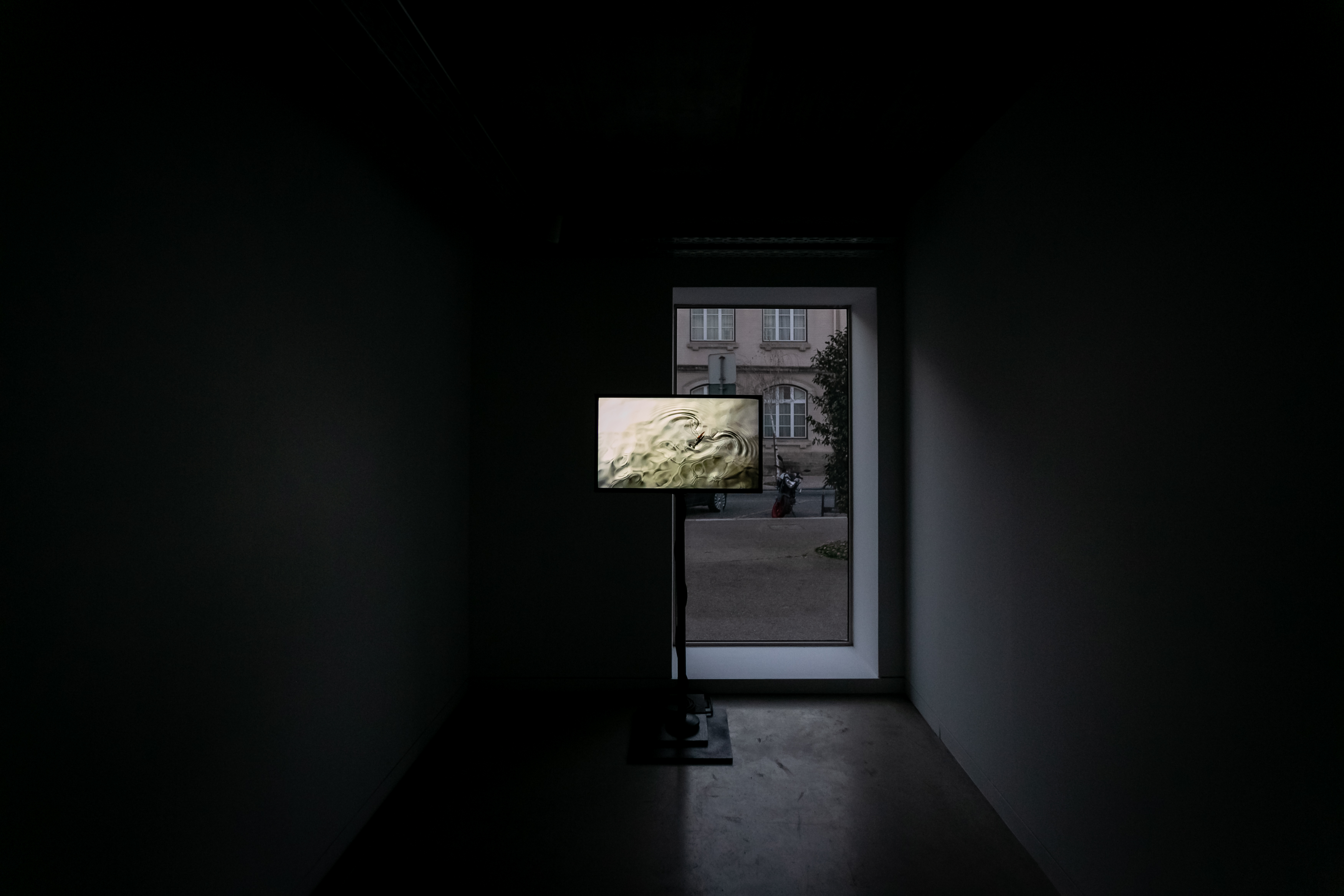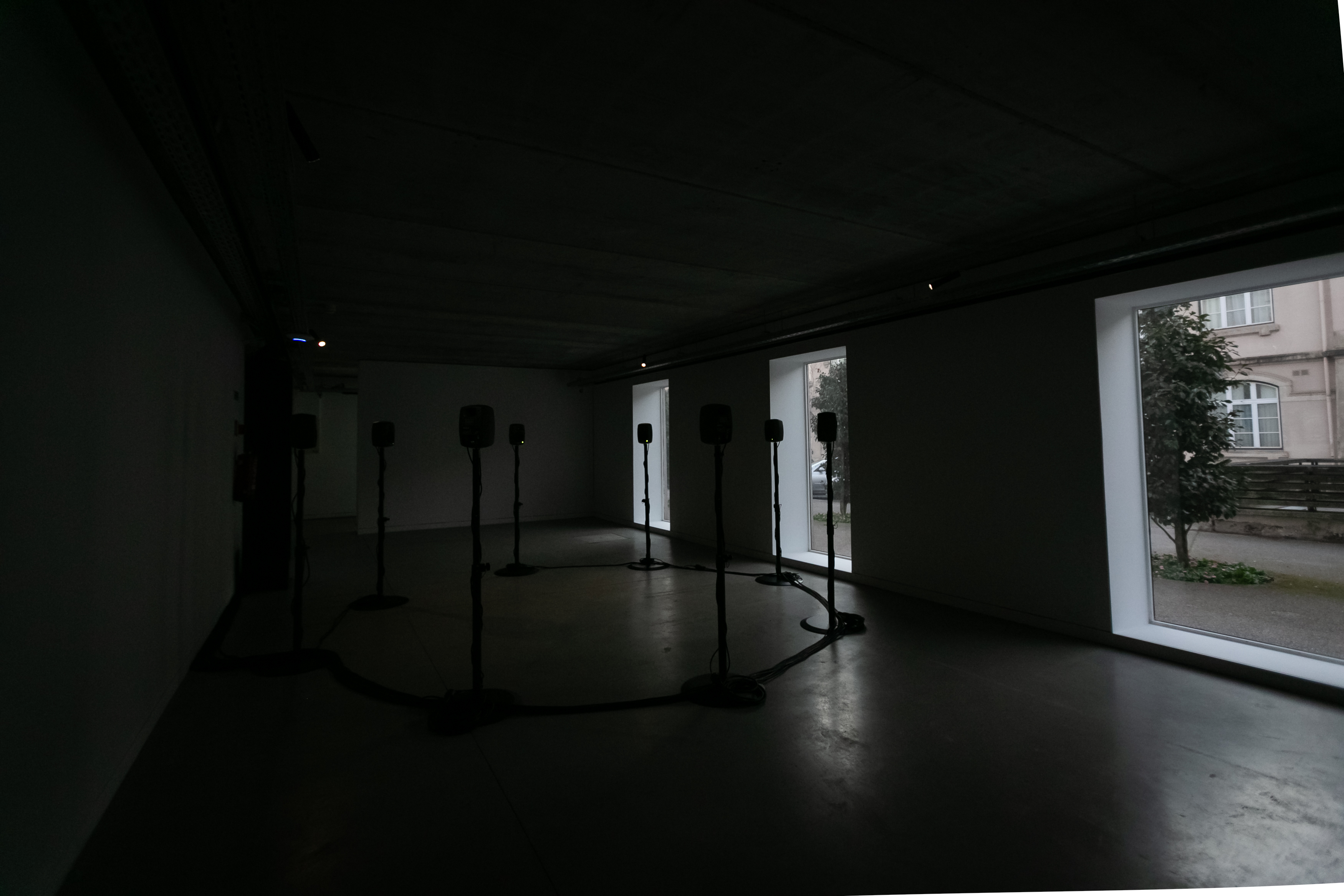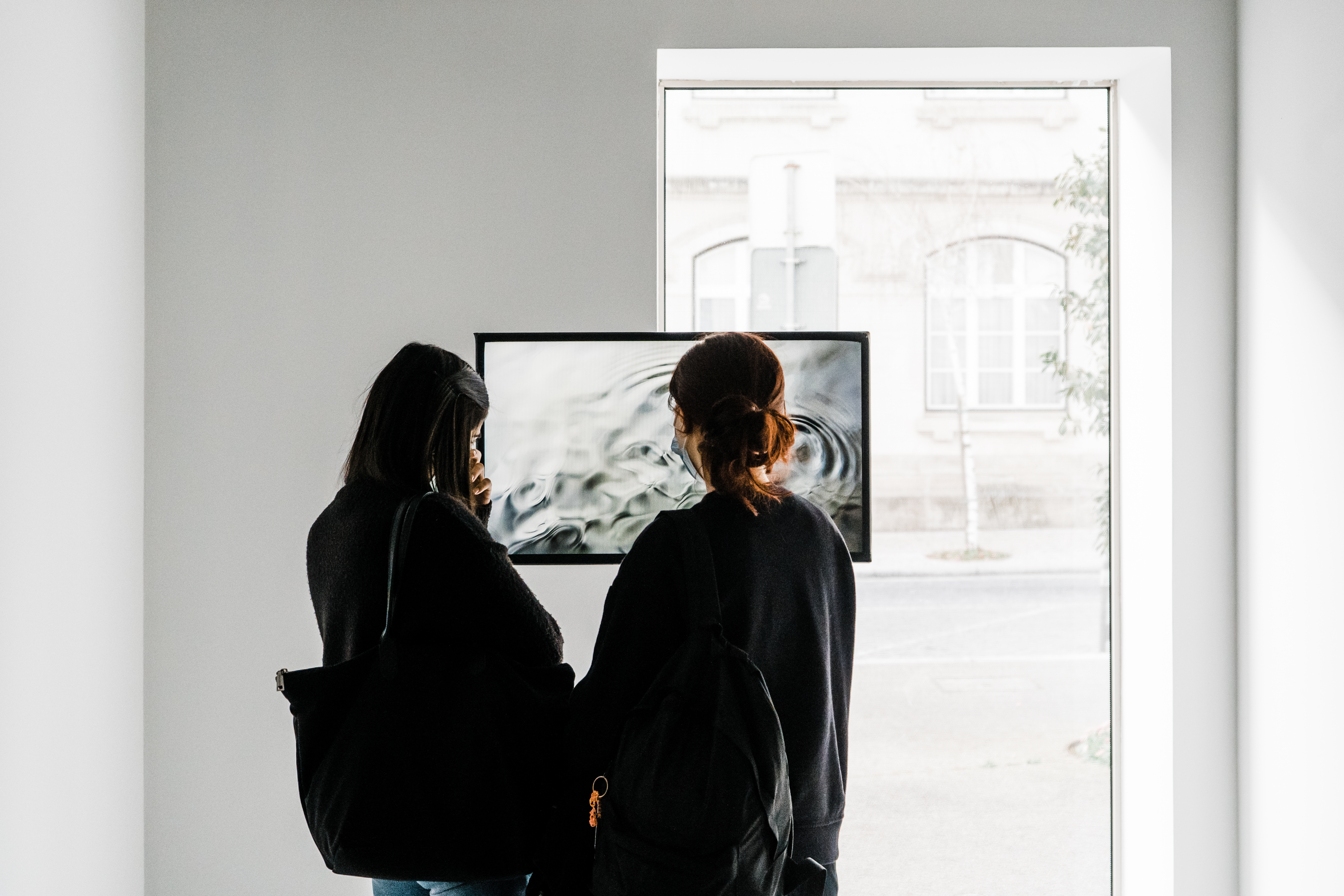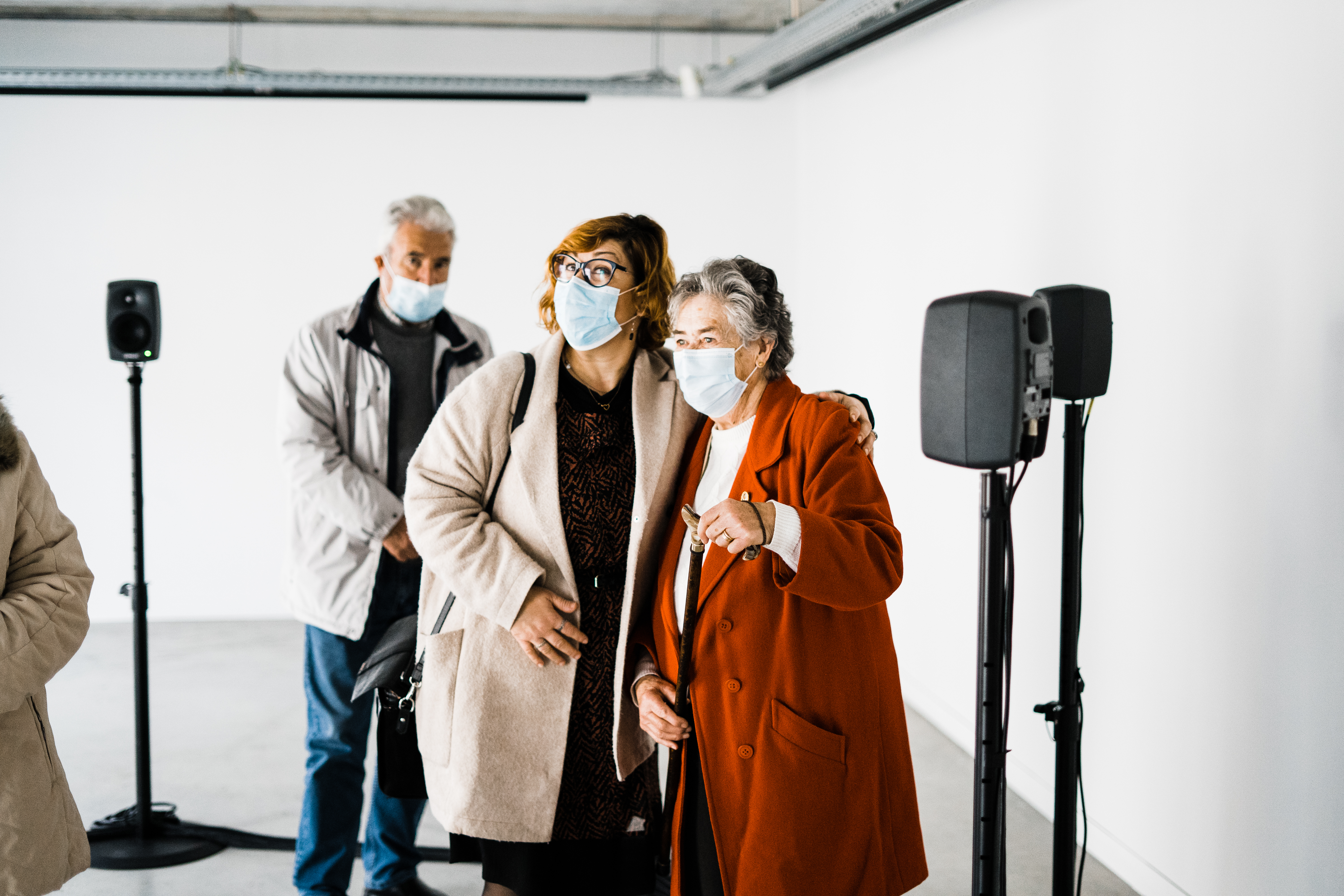‘Surviving the Impact of Raindrops’, Scale travel, INL Gallery, gnration, Braga, curated by Luís Fernandes
29 January 2022 to 30 April 2022
In relation to the residency Jana did at INL, Braga, she made the installation 'Surviving the Impact of Raindrops', an eight channel sound and one channel video installation in the INL Gallery at gnration in Braga.
The eight channel sound installation Surviving the Impact of Raindrops is made for the project Scale Travels, a collaboration between gnration and INL in Braga. Jana did a residency with the Water Quality Group at INL in the autumn 2021. This composition is based on recordings she has made both above and below the surface of the water, of fish, crustacea, aquatic insects and bats.Freshwater biologists collect and count aquatic insects to learn about water quality. Jana suggested in 2010 that by recording the sound of the insects you could monitor the health of the water. Since then she has worked on several projects involving this idea, both in freshwater and also saltwater environments around coral reefs and deep under the sea ice. Underwater insects and beetles bring air bubbles or a plastron underwater to breathe. They extract oxygen out of the plastron or through the surface of the air bubble, functioning almost like a mechanical lung. At the nano-scale level, nanoparticles can accumulate in the body of aquatic creatures, and possibly all living creatures. In relation to the nano-scale these insects are enormously large. Jana is interested in how the exchange of oxygen happens for the insects, and whether these air bubbles could also function as an extension of the insects’ ears, or work as an amplifier for sound. They use stridulation, rubbing body parts together to make sound, and they often trigger each other and form what sound like choirs of crickets, but underwater. Many creatures underwater are navigating, communicating and hunting with sound.







